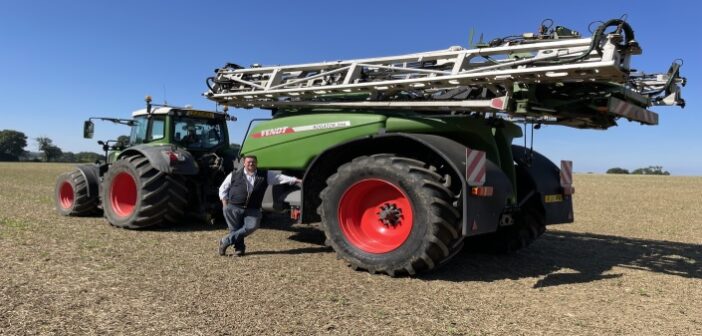Adding an adjuvant to herbicide sprays can improve the retention of actives in soils.
Research by the Soil Science & Plant Cultivation Institute in Poland over the last three seasons has shown up to 6% more herbicide retained in the upper soil layer, boosting weed control.
With residual herbicide performance often at the mercy of the weather incorporating an adjuvant into the tank mix could be the answer to keeping chemistry working for longer with ongoing climate variability.
The challenge with that from a crop protection point of view is that heavy rain moves herbicides out of the weed germination zone, explains Stuart Sutherland, technical manager at Interagro.
“While there is not much growers can do about the weather, they do have options and tools to help minimise its impact,” he says. “For weed control to be a success, residual herbicides must be retained in the weed germination zone – the top 5 cm of the soil – for as long as possible to control flushes that germinate over time.
“This is where using an adjuvant can help – to bind chemistry to the crop and keep it where it needs to be for longer – which in turn can help keep particularly problematic weeds like blackgrass at bay.”
The research covers a range of actives including cinmethylin. 2023 trials at the institute revealed 6% more cinmethylin in the top 5 cm of soil and to a lesser degree between 5 – 10 cm when the adjuvant backrow Max was added.
It enhances herbicide coverage across the soil by optimising herbicide droplet size, and by binding to clay particles in the soil, maintaining a lethal dose of active herbicide in the weed germination zone. “This is particularly valuable in reducing the impact of a dry autumn or spring on herbicide performance and maximising crop safety and efficacy in adversely wet conditions, not to mention the water stewardship benefits,” notes Mr Sutherland.
Belvoir Farms manager Keith Challen believes it is assisting herbicide activity as part of an integrated weed management programme. He oversees the management of 1,200 ha of very heavy clay soils which have historically been plagued by blackgrass.
However, through using the full breadth and width of both chemical and cultural controls, the farm has made significant progress over recent years and is now achieving 98% control.
A key part of this strategy is getting the chemistry right and keeping it in the soil for longer, which is where Backrow Max has proven to be highly beneficial, believes Mr Challen – even in a season like the last where unpredictable weather patterns led to higher weed levels than usual.
“We actually walked the farm in its entirety in February and said we’d got the best blackgrass control we’d had in years,” he says, “We put this down to having Luximo (cinmethylin) on farm this year and using it in combination with Interagro’s adjuvant, Backrow Max, which has been a mainstay of our programme for a number of years and helps retain pre-ems in that top 5cm.”
Last season’s chemical programme included Luximo with Backrow Max at pre-emergence, followed by flufenacet, again with Backrow Max in the tank, at peri-emergence, applied in 250 litres/ha water. “We used Luximo on 99% of the farm because of the clay and the high blackgrass levels, partnered with Pontos (flufenacet + picolinafen) and Backrow Max,” explains Mr Challen. “At peri-em, we follow up with Giddo (flufenacet + diflufenican), Octavian Met (diflufenican + flufenacet + metribuzin) and Backrow Max and that’s usually it – and that normally does a damn good job.
“For us, Backgrow Max is part of the mix every year – it’s not a case of ‘do we, don’t we’, it’s just something we always use in the tank mix. This farm is a ‘stressful’ farm, by that I mean it’s either too wet or too dry. But the Backrow Max seems to stabilise whatever product we use and that’s really key for us.”




